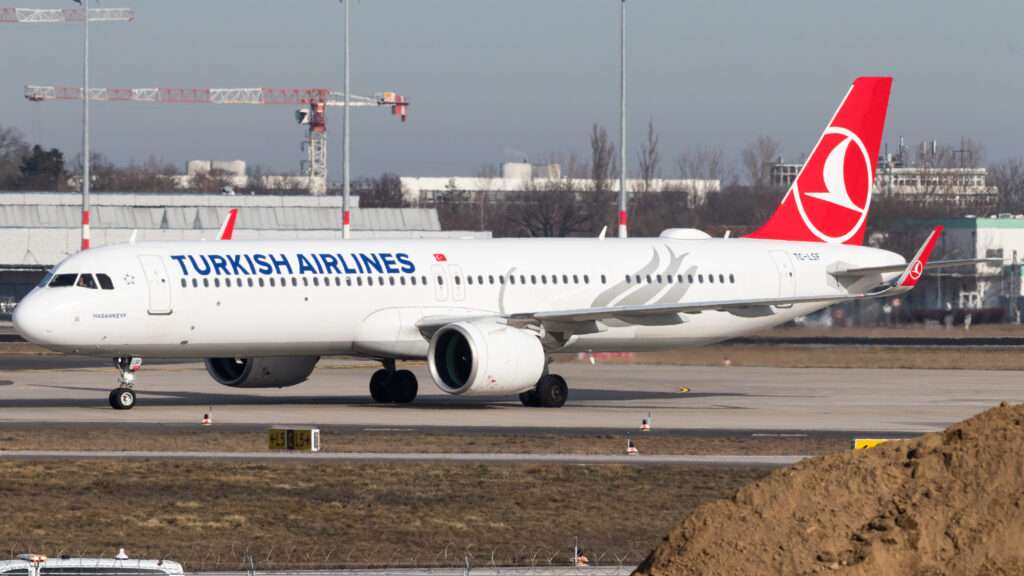Largest Airlines in the World by Fleet Size: Turkish Airlines
Turkish Airlines, a global aviation giant known for its extensive network and award-winning service, boasts a rich history that mirrors the development of modern Turkey.
From its humble beginnings with a handful of propeller planes to its current status as a major international carrier, the airline’s journey reflects a commitment to connecting people and cultures across continents.
Early Years: Soaring Above Domestic Skies (1933-1950s)

In 1933, the seeds of Turkish Airlines were sown when the “State Airlines Administration” (Devlet Hava Yolları) took to the skies.
This fledgling airline, a department of the Ministry of National Defense, possessed a modest fleet of just five aircraft:
- Two Curtiss Kingbirds
- Two Junkers F.13s
- One Soviet-gifted Tupolev ANT-9.
Their inaugural flight, a domestic hop from Ankara to Istanbul, marked the beginning of a remarkable story.
The early years focused on establishing a domestic network, with destinations like Ankara, Izmir, and Bursa being added.
The airline transitioned to the Ministry of Public Works in 1935 and later to the Ministry of Transportation in 1938.
This reflected its growing importance to the nation’s infrastructure.
World War II, while hindering global travel, presented an opportunity for Turkish Airlines.
By acquiring surplus Douglas DC-3s from the US, the airline significantly expanded its fleet, becoming the largest carrier in the Middle East by 1945.
This period also saw the airline shed its government department status and become the “General Directorate of State Airlines.”
Taking Off: International Expansion and the Jet Age (1950s-1980s)
The post-war era witnessed Turkish Airlines spread its wings internationally.
1947 marked a milestone with the first overseas flight to Athens, symbolizing Turkey’s burgeoning connection to the world.
The 1950s saw further expansion with destinations like Nicosia, Beirut, and Cairo joining the network.

Notably, 1953 witnessed the opening of Istanbul Yeşilköy Airport.
This was a crucial development that would later become the bustling Atatürk Airport, a global aviation hub.
This decade also saw a technological leap with the introduction of Viscount 794 aircraft in 1958.
This marked the transition from piston engines to the jet age.
The iconic wild goose logo, designed by Mesut Manioğlu in 1959, became a symbol of the airline’s soaring ambitions.
The 1960s and 1970s were a period of steady growth.
The first jet-powered aircraft, a Douglas DC-9, joined the fleet in 1967.
Wide-body aircraft like the McDonnell Douglas DC-10 were incorporated in 1972, allowing for longer-haul flights and increased passenger capacity.
Turkish Airlines continued to expand its international network, reaching destinations in Europe, the Middle East, and Asia.
Transformation and Growth: A Global Player Emerges (1980s-Present)
The late 1980s marked a turning point for Turkish Airlines.
With substantial government backing, the airline embarked on a period of aggressive international expansion.
The arrival of the Airbus A310 and the subsequent order of the A340 signified a shift towards a modern Airbus fleet.
This strategic decision, coupled with a focus on improved service and in-flight amenities, laid the foundation for Turkish Airlines’ rise as a global aviation powerhouse.
The new millennium ushered in an era of unprecedented growth.
Turkish Airlines adopted a hub-and-spoke model, leveraging Istanbul’s strategic location as a bridge between East and West.
Furthermore, the airline joined the Star Alliance network in 2008.

This further solidified its global reach and offering passengers seamless connectivity to a vast network of destinations.
Today, Turkish Airlines boasts a modern fleet of over 365 Airbus and Boeing aircraft, serving a network spanning more than 300 destinations in over 120 countries.
The airline is consistently recognized for its in-flight service, entertainment options, and extensive network, making it a preferred choice for travelers worldwide.
Looking Ahead: A Commitment to the Future
In conclusion, as Turkish Airlines soars into the future, its focus remains on innovation and sustainability.
The airline is actively investing in fuel-efficient aircraft and exploring alternative fuels to minimize its environmental impact.
Additionally, Turkish Airlines continues to invest in its brand, aiming to provide an unparalleled travel experience that reflects Turkish hospitality and culture.
From its humble beginnings with a handful of propeller planes to its current status as a global leader in aviation, Turkish Airlines’ journey is a testament to its unwavering commitment to connecting people and cultures.
As the airline continues to expand its network and refine its services, one thing remains certain: Turkish Airlines will keep taking flight, shaping the future of global connectivity.

Click the banner to subscribe to our weekly newsleter.

Click the photo to join our WhatsApp channel so then you can stay up to date with everything going on in the aviation industry!



